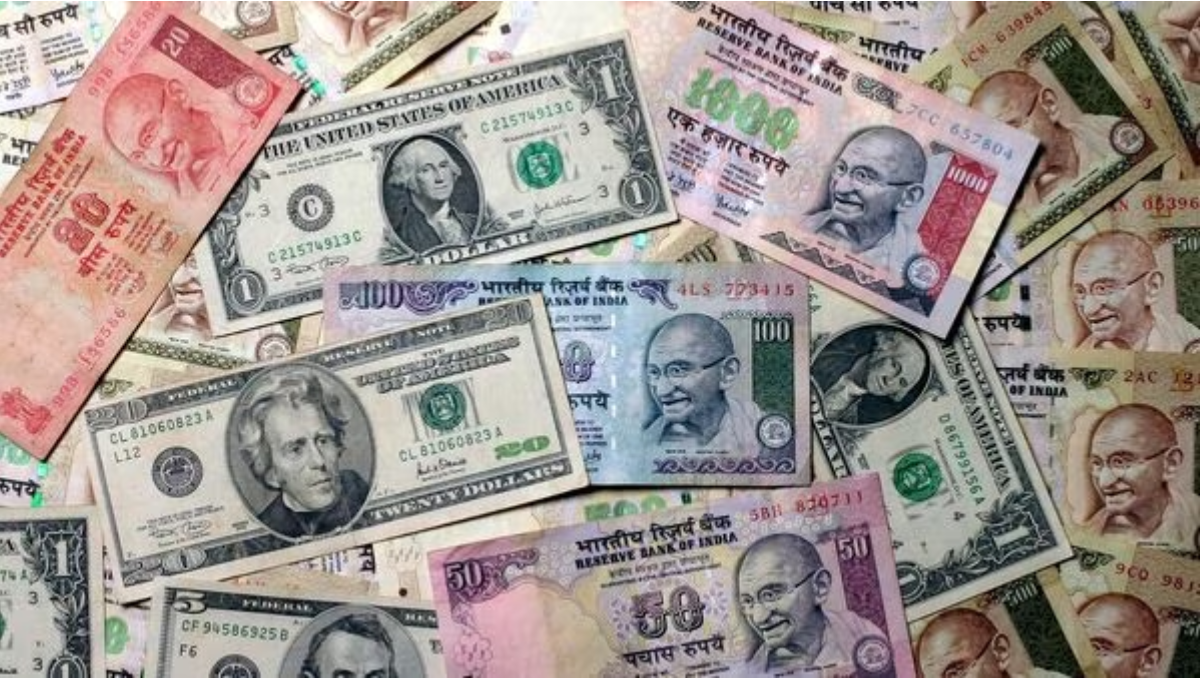The Indian rupee has started to strengthen against the US dollar, rising 7 paise to 83.44 in early trade. This improvement is occurring in the midst of shifting economic indicators and worldwide marketplaces. This small rise has been influenced by a number of factors, including changes in the foreign exchange market, domestic economic statistics, and governmental choices.
Key Drivers Behind Rupee’s Rise
Many national and international causes have contributed to the rupee’s recent increase in value. First and foremost, a significant factor is the US dollar’s performance in the global market. The Indian rupee and other emerging market currencies usually gain from any decline in the US dollar. The Indian currency has benefited somewhat in this instance from the dollar’s minor decline versus a basket of currencies.
The equities markets’ positive attitude has been encouraging. The National Stock Exchange (NSE) and Bombay Stock Exchange (BSE) have performed well, attracting foreign investment into the nation. As international investors exchange their dollars for rupees to invest in Indian markets, these inflows contribute to the rupee’s appreciation.
India’s macroeconomic statistics have also revealed some positive trends. Recent figures on GDP growth, inflation, and industrial production indicate that the Indian economy is steadily, if modestly, recovering. The rupee’s strength has been attributed to the increased investor confidence brought about by these encouraging signs.
Impact of Global Market Trends
The performance of the Indian rupee is heavily influenced by the current circumstances of the world economy. Changes in global economies, especially the US economy, directly affect the value of the rupee relative to the US dollar. For example, news on interest rate policy of the US Federal Reserve can influence currency markets.
Recently, the world’s markets have been on edge due to speculation about the Federal Reserve’s potential policy changes. Any hint of an impending increase in interest rates often strengthens the currency and increases investment appeal. In contrast, the dollar declines if the Fed adopts a more dovish posture, which helps other currencies like the rupee.
Events in geopolitics are also quite important. A few worldwide factors that can cause volatility in the currency markets are trade conflicts between major economies, Middle East tensions, and Brexit worries. During uncertain times, investors frequently seek out safe-haven assets like the US dollar, which puts pressure on emerging market currencies.
The Role of India’s Economic Indicators in Rupee Movements
The trajectory of the Indian rupee is significantly influenced by domestic economic indicators. Important metrics that convey information about the state of the economy and affect investor mood include GDP growth, inflation rates, and data on industrial production.
Although recent economic data from India has been inconsistent, there are indications of a slow recovery. A rise in manufacturing activity is shown by the industrial production index. Meanwhile, worries about an impending economic overheat have subsided as inflation has stayed within controllable bounds.
The Reserve Bank of India’s (RBI) policy decisions also have an effect on the value of the rupee. Crucial elements include the RBI’s decisions on interest rates, managing foreign currency reserves, and intervening in the FX market. The central bank’s actions to maintain currency stability and control inflation play a vital role in supporting the rupee.
What Lies Ahead for the Indian Rupee
In the future, a mix of domestic and international factors are expected to impact the rupee’s performance. It will be crucial to keep an eye on US Federal Reserve policy decisions, global economic trends, and geopolitical developments. In terms of domestic affairs, the rupee’s strength will depend on maintaining strong economic development and reining in inflation.
Both the RBI and the Indian government will need to continue being watchful and adaptable to challenges from the outside as well as from within. In order to ensure the stability and growth of the rupee in the upcoming months, strategic policy actions and the creation of a favourable investment climate would be essential.
